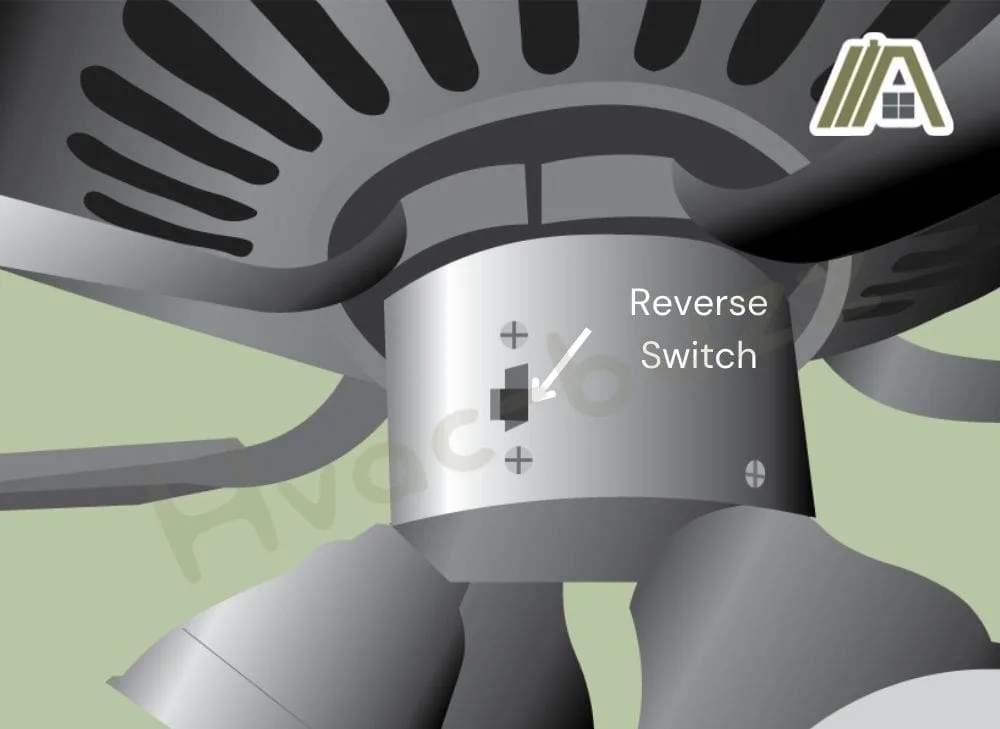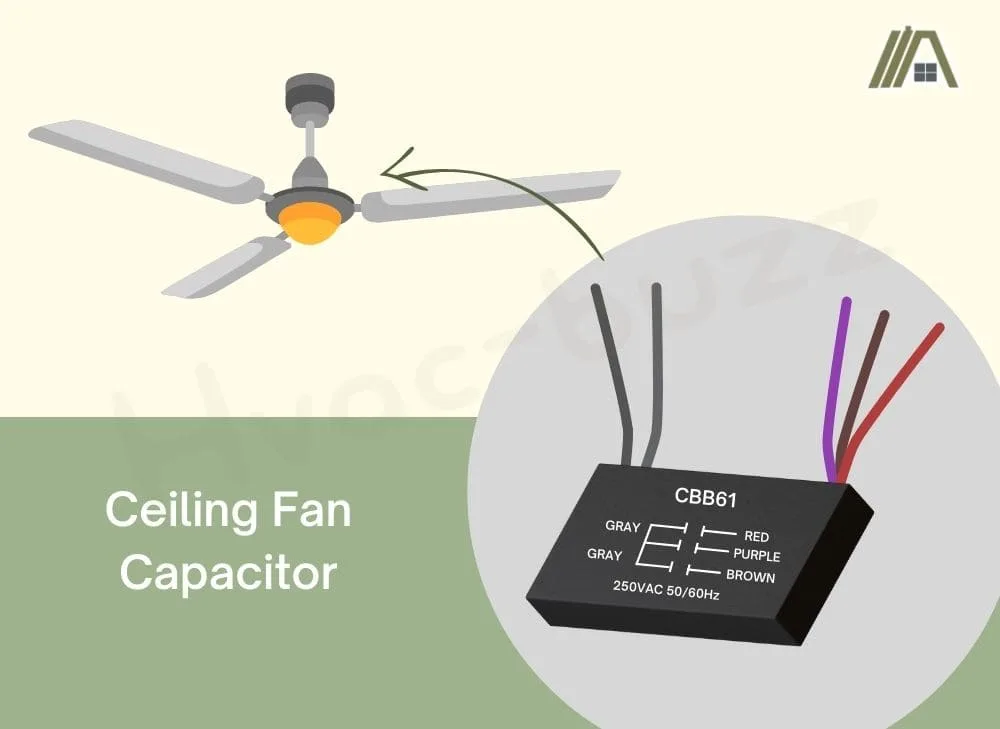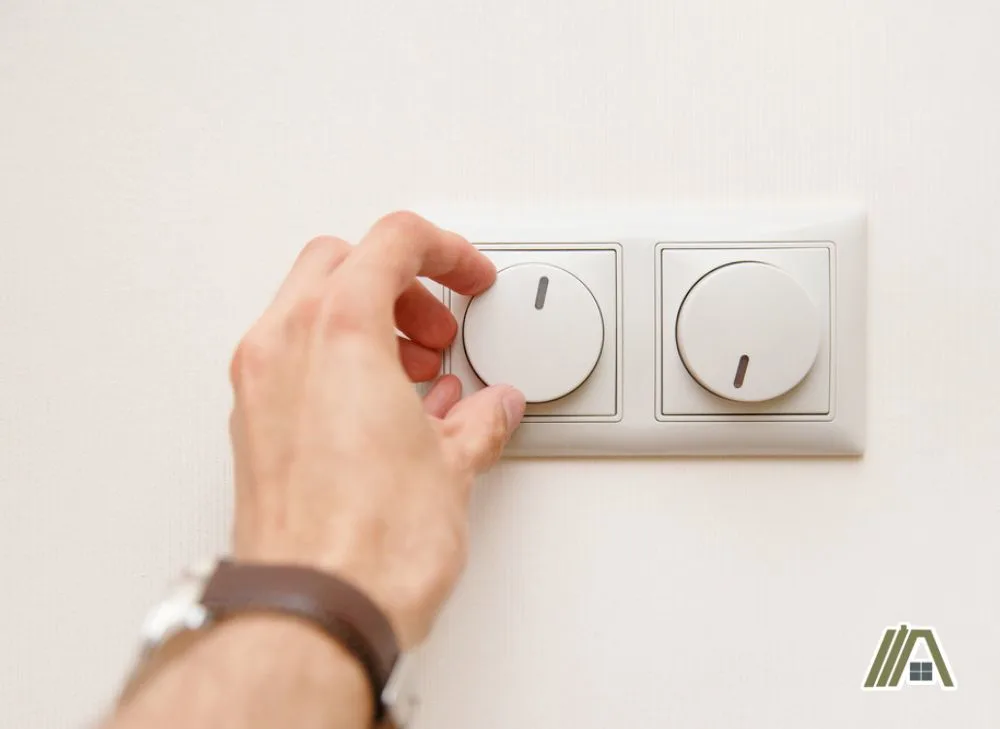Having a fan that can change direction is both helpful and cost-efficient. Not only does it help cool you down in the summer, but it can also help distribute heat in the winter, allowing you to save on both heating and cooling.
Unfortunately, having a malfunctioning fan, such as one that changes direction by itself, is frustrating and can be an indication that there is a bigger problem with the fan itself. So, let’s get into the possible causes and solutions.

Ceiling fans change direction by themselves if the direction switch is broken, the capacitor malfunctions, the wiring is faulty, or if there is a non-compatible dimmer switch controlling the fan. It could also be that the switch was flipped during cleaning.
Check Your Fan’s Direction Switch
The first thing you should check is your fan’s direction switch.
This is usually on the motor housing; however, it could be inside the fan switch housing or switch cup. It can also be “hidden” in the light fitting under the cover.

You should try switching the fan’s direction a couple of times to verify that it is not working properly, as it could be possible that you accidentally flipped it while cleaning. This is more likely, as it is rare for the direction switch to malfunction.
A key way to tell that there is an issue with the switch itself is if the fan continues moving in the same direction even after flipping the switch.
How to Fix the Direction Switch?
Replacing the direction switch is pretty easy as long as you are careful. When getting a replacement, it is important to match the switch that you already have since it is compatible with your fan.
When replacing the switch, you need to turn off the power to your fan at the breaker box. If you do not, you are risking getting shocked, even if you turn it off at the wall.
Take apart your fan and make note of where each wire is connected to the switch. Then, disconnect the wires and reattach them to the new switch securely.
It is recommended to test the fan before putting the lighting and fan cap back on to make sure that it is now working properly.
Make Sure the Fan’s Capacitor Is Working Properly
The fan’s capacitor is the part that starts the fan and makes it spin. However, it is possible for the capacitor to malfunction.
Oftentimes, this causes the fan not to move, but other times it can lead to the fan changing directions at random.
A good way to tell that your fan’s capacitor is the cause of your fan’s changing direction is if the fan seems to be functioning abnormally. For instance, if the fan’s speed also seems to be changing by itself.
How to Change the Capacitor?
Replacing the capacitor is very similar to replacing the fan switch. Again, it is important to make sure the power to the fan is off.
The capacitor is usually found behind the light kit. When replacing the capacitor, you should make a drawing or find another way to remember where each wire is connected. This is especially important as the new capacitor may have different color coding.

Be sure to get a capacitor that is identical to the one that you already have to make sure that it is compatible with your fan.
Inspect the Wiring
If your ceiling fan is changing directions randomly, it is possible that it was wired incorrectly. Not only can this cause your fan to reverse directions, but it could also lead to other issues.
Faulty wiring can also lead to light bulbs burning out very quickly or flickering. It can also cause circuit breakers to trip often.
If there is not an issue with the switch or the fan’s capacitor, it is likely that the problem is caused by the wiring.
How to Fix the Wiring?
If the issue is wiring related, it is recommended to get a professional electrician to fix it. However, it is possible to fix it yourself if you understand what you are doing.
Make sure that the power to the fan is off while working with it. Then, you should use the installation manual for the fan if you still have it, as it will give you the specifics for your fan.
Some tips for when dealing with wiring are to cut the wires as close to the connection as possible to give yourself enough slack to work with.
In addition, it is important to keep in mind that connecting a power wire and neutral wire will immediately cause the breaker to trip.
Never Have the Fan Installed on a Dimmer Switch
Having a ceiling fan installed on a dimmer switch can cause many issues, some of which are dangerous.
If your fan is installed on a dimmer switch, it could potentially cause the fan to change direction randomly. This is because components in the switch can interact with the fan motor and cause it to act abnormally.

Additionally, the fan may not work at all of the speeds.
Even worse, having a fan on a dimmer switch makes can burn out the motor and potentially cause a housefire. Therefore, it is imperative to remove the dimmer switch from the fan.
However, a fan can use a dimmer switch if the switch was specifically designed for a fan. This is because it functions differently and does not pose any issues.
How to Remove a Dimmer Switch?
Replacing a dimmer switch with a regular switch is not too complicated and should be relatively easy.
As with all projects relating to electricity, you need to turn off the power to what you are working with. In this case, you need to turn off the power to your fan.
Using a voltage tester, you are able to distinguish power and neutral wires, which allows you to connect them correctly.
If anything, a professional electrician would be able to help or even do the job for you without the hassle of doing it yourself.
Sources
https://homeguides.sfgate.com/replace-ceiling-fan-direction-switch-79975.html
https://homeguides.sfgate.com/replace-ceiling-fan-capacitor-62118.html
https://diyallday.com/can-a-ceiling-fan-be-on-a-dimmer-switch/
https://ask-the-electrician.com/replacing-a-dimmer-with-a-light-switch/electrical-wiring-2/
